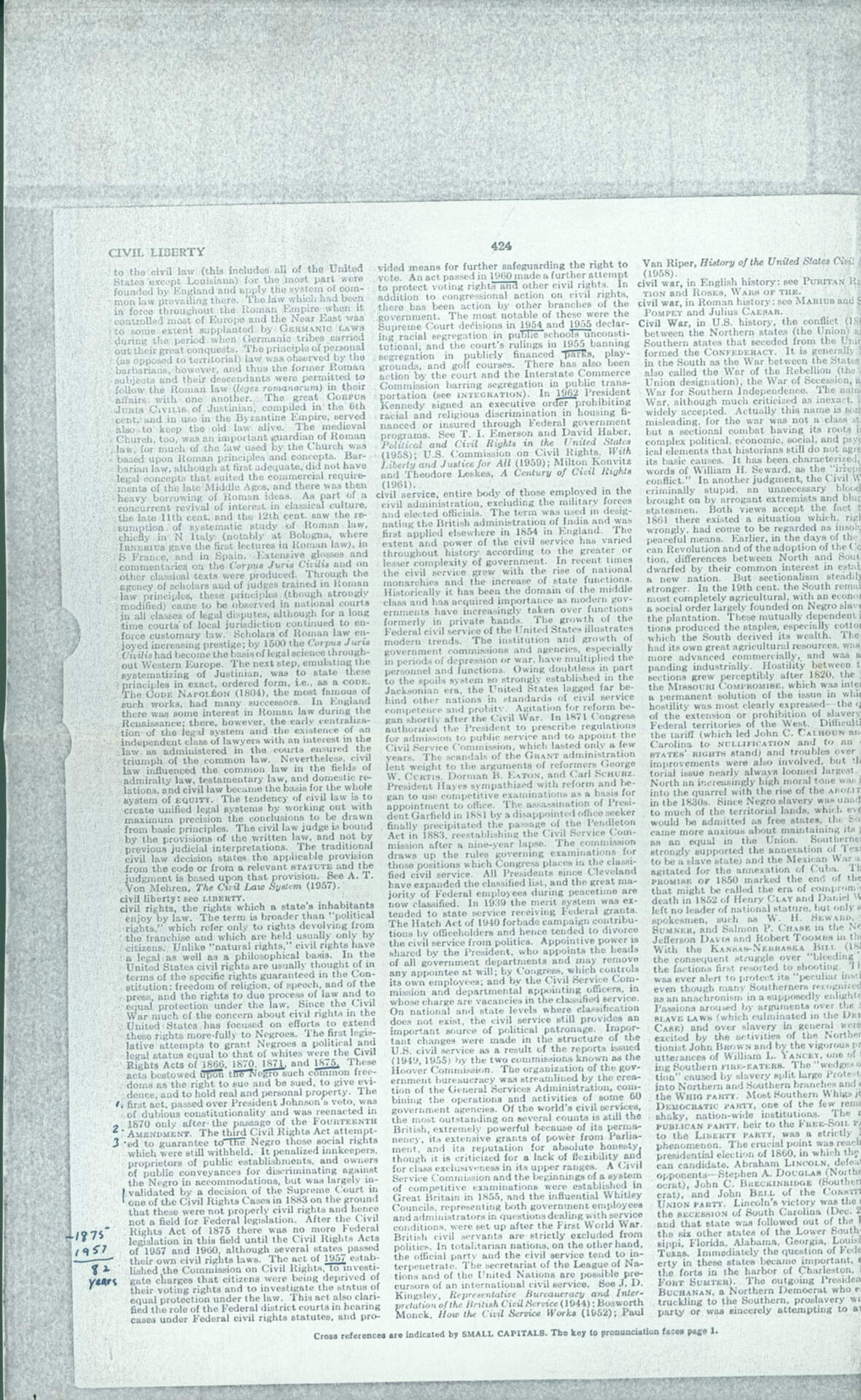Paul Sharits (1943-1993)Civil Liberty
Copied article on paper with annotations
14 x 8 1/2 inches
Gift of Christopher and Cheri Sharits, 2006
Civil rights, the rights which a state’s inhabitants enjoy by law. The term is broader than “political rights,” which refer only to rights devolving from the franchise and which are held usually only by citizens. Unlike “natural rights,” civil rights have a legal as well as a philosophical basis. In the United States civil rights are usually thought of in terms of the specific rights guaranteed in the Constitution: freedom of religion, of speech, and of the press, and the rights to due process of law and to equal protection under the law. Since the Civil War much of the concern about civil rights in the United States has focused on efforts to extend these rights more-fully to Negroes a political and legal status equal to that of whites were the Civil Rights Acts of 1886, 1870, 1871, and 1875. These acts bestowed upon the Negro such common freedoms as the right to sue and be sued, to give evidence and to hold real and personal property. The first act, passed over President Johnson’s veto, was of dubious constitutionality and was reenacted in 1870 only after the passage of the FOURTHEENTH AMENDMENT. The third Civil Rights Act attempted to guarantee to the Negro those social rights which were still withheld. It penalized innkeepers, proprietors of public establishments, and owners of public conveyances for discriminating against the Negro in accommodations, but was largely invalidated by a decision of the Supreme Court in one of the Civil Rights Cases in 1883 on the ground that these were not properly civil rights and hence not a field for Federal legislation. After the Civil Rights Act of 1875 there was no more Federal legislation in this field until the Civil Rights Acts of 1957 and 1960, although several states passed their own civil rights laws. The act of 1957 established the Commission on Civil Rights, to investigate charges that citizens were being deprived of their voting rights and to investigate the statuses of equal protection under law. This act also clarified the role of the Federal district courts in hearing cases under Federal civil rights statues, and provided means for further safeguarding the right to vote. An act passed in1960 made a further attempt to protect voting rights and other civil rights. In addition to congressional action on civil rights, there has been action by other branches of the government. The most notable of these were the Supreme Court decisions in 1954 and 1955 declaring racial segregation in public schools unconstitutional; and the court’s rulings in 1955 banning segregation in publically financed parks, playgrounds, and golf courses. There has also been action by the court and the Interstate Commerce Commission barring segregation in public transportation (see INTEGRATION). In 1962 President Kennedy signed an executive order prohibiting racial and religious discrimination in housing financed or insured through Federal government programs.


